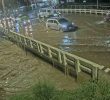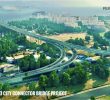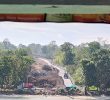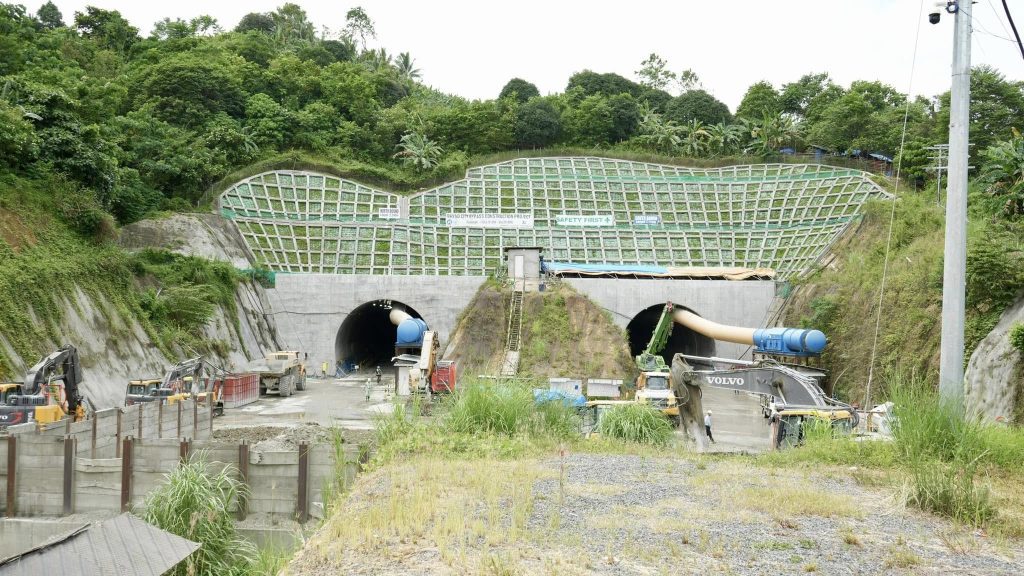
DAVAO CITY, Philippines – Davao City’s rising urbanization and traffic problem is expected to be solved by the Davao City Bypass Tunnel Project, the country’s first long-distance mountain tunnel spanning 2.3 kilometers, expected to open by the end of 2027.
But the construction has raised environmental and livelihood concerns, as 600 farming families in the city’s agricultural areas lost their farms to give way to the tunnel, while the construction is contributing to the city’s flooding.
Addressing traffic woes
As Davao City has risen over the last two decades as the largest urban center and a hub for trade and commerce in Mindanao, it is facing rising problems such as traffic woes, inefficient logistics, and connectivity issues that affect daily life of commuters and residents, and transport of goods.
The main highway of the city, which connects the southern part to the north of Davao, has always been a bottleneck, making even the simplest commutes an ordeal. Traveling through this critical thoroughfare during morning and afternoon rush hours takes two hours or more, with commuters stuck in gridlock. For industries reliant on the prompt delivery of perishable goods, besides the inconveniences due to delays, these raise transportation costs, further straining an already congested system.
Enter the bypass tunnel project, a flagship infrastructure project for Mindanao under the Build, Build, Build infrastructure program of the previous Duterte administration, which began in December 2020, while the main construction started in April 2021.
The Department of Public Works and Highways (DPWH) said that this tunnel will cut travel time. Travel from the city’s southern part of Barangay Sirawan in Toril District to the northernmost border in Brgy. J.P. Laurel in Panabo City would usually take one hour and 44 minutes, but the alternate route via the tunnel is said to cut down travel for an hour, or around 49 minutes.
The bypass project is funded through loans from Japan International Cooperation Agency (JICA) under the special terms for economic partnership (STEP).
The construction is part of the agency’s contract package for the project worth P13.23 billion, and is handled by Shimizu Corporation and the Philippines’ Ulticon Builders Inc. based in Davao. Takenaka Civil Engineering and Construction Co. Ltd., one of Japan’s major construction firms, serves as the project contractor.
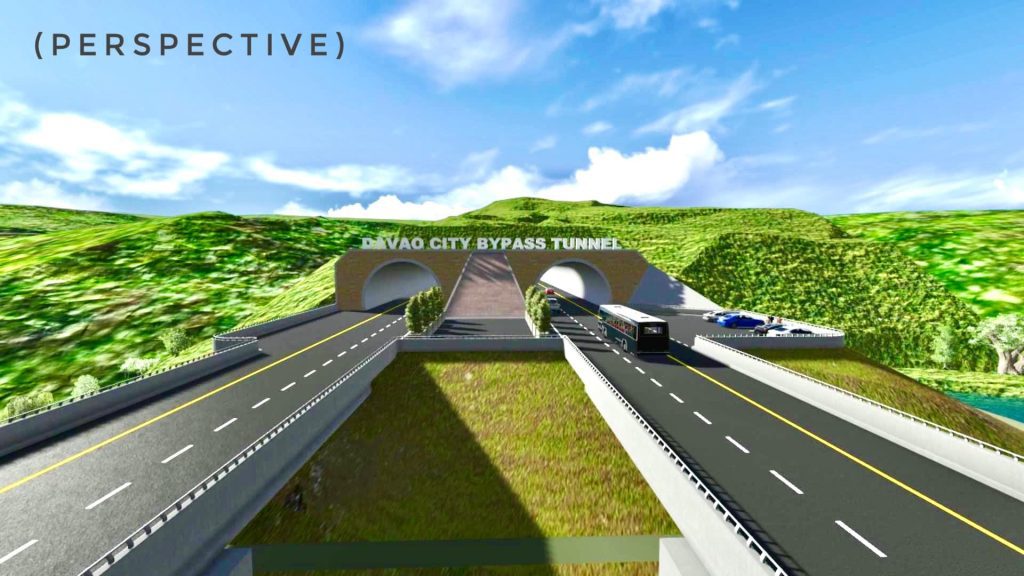
The project also consists of a 45-kilometer stretch that will pass through several barangays starting at Sirawan in Toril, heading towards Marapangi and Bato, traverse Lipadas Bridge and then Barangays Lubogan, Alambre, Bangakas Heights, Mulig, Bago Oshiro and Marapangi Mintal where the University of the Philippines Mindanao is located. Along Tugbok Proper it will pass through Talomo rivers and mountainous areas in Barangays Tacunan and Matina-Biao, Magtuod, Waan, cross Davao River and head towards the northern part of the city through Tigatto to Cabantian, Lasang River, Barangays Communal, Indangan, Mudiang, Tibungco, Mahayag, San Isidro and Lasang.
The DPWH announced last July 2024 that the project is already halfway through its completion, while DPWH Project Director Engr. Benjamin Bautista targeted the tunnel’s opening by the end of 2027.
Displacing farmers
While this project will address transportation issues of the city and the region, this has affected 2,500 residential structures and more than 400 hectares of agricultural land where at least 600 farming families reside.
About 300 hectares of banana, coconut, and cacao farms-essential sources of livelihood-are scattered across 16 barangays, including Sirawan, Marapangi, Tacunan, Cabantian, and Communal.
One of the farmers, Dante Manan from Purok 12 of Barangay Waan, said it is “heartbreaking” that his one-hectare farm of coconuts and barangays is gone.
“This project may bring other livelihood to many people in Waan, but it is very heartbreaking that our source of income, where my family has relied for decades, was hit by the tunnel,” said Manan. “We were initially paid two years ago; our farm is now turned to concrete. But until now we did not receive the full payment from the DPWH.”
The DPWH has designed a Livelihood Restoration and Improvement Program to provide financing and training in alternative livelihood new businesses.
While some of the farmers have been given compensation by the DPWH, others who haven’t received full payments are worried with the trade-off, losing their farms which could have supported their next generations.
“We have been farming here for generations, this land is our livelihood,” said a farmer from Barangay Mulig who requested his name be withheld for this story. “Support has been promised but we needed concrete results.”
These families have talked to DPWH representatives, following up on their compensation and other things promised them.
“Our priority is to see to it that these affected families would not just receive compensation for the lands taken but a chance to rediscover their viable future,” said DPWH Project Manager Engr. Maximo Ewald Montaña.
Davao Today sought an interview with DPWH region 11 officials but they said they need clearance from their national office.
Risks on watershed
While farms are now lost, there are other concerns about the impact of the tunnel project raised by the city’s environment group Interfacing Development Interventions for Sustainability (IDIS).
While tunneling is less invasive of surface vegetation and wildlife compared to other infrastructure construction, it poses particular problems that contribute to flooding in the city, noted Lemuel Manalo, IDIS Program Coordinator.
One of the focal points in the project’s environmental impact is its intersection across the city’s critical watersheds, primarily the Matina Pangi watershed and upper parts of the Davao River Watershed.
The said watershed is integral to the ecological and water management situation in Davao City.
Manalo pointed out that the construction of the tunnel disrupts the natural flow of water, leading to runoff on land surface and alteration in the hydrologic cycle.
These changes contribute to more stress to the Matina Pangi watershed, which is already affected by the deforestation and urbanization around its areas.
These activities may further exacerbate flood events at such times when heavy rain pours, as Matina Crossing is a natural drainage of the Matina Pangi watershed.
Changes in natural hydrology will further worsen urban flooding, which already has many problems existing in low-lying areas, Manalo pointed out. Last January 4, 2025, the Matina and Talomo Rivers overflowed, rendering major bridges impassable and flooding residential settlements in Matina Pangi, Matina Crossing, and Matina Aplaya.
IDIS, which engages with the Davao City Council on environment concerns, reported this catastrophe to be caused by a combination of heavy rain together with human-made actions like deforestation and the digging of non-metallic quarrying in areas upstream.
The group raised concerns that the alignment of the bypass tunnel will hasten urban sprawl. Property owners are expected to transform idle agricultural lands along the corridor into warehouses and hubs of logistics, translating to the highly unregulated conversion of land to more ‘commercialized uses’ and an increase in population density, heavier traffic.
“Without proper land-use regulations, the project could turn the area into another congested hub, replicating the environmental challenges faced by Shrine Hills,” warned Manalo.
To deal with these concerns, IDIS calls for proactive measures on watershed protection and maintenance of greenery in the city’s mountainous areas.
“The bypass project has potential benefits insofar as accessibility and mobility are concerned, but poorly planned, it might induce irreversible damage to critical ecosystems like the Matina Pangi watershed,” Manalo said. (davaotoday.com)
This story was produced with the support of Internews’ Earth Journalism Network as part of the Media Action on Sustainable Infrastructure in the Philippines.
Bypass Tunnel Project, davao city, JICA
